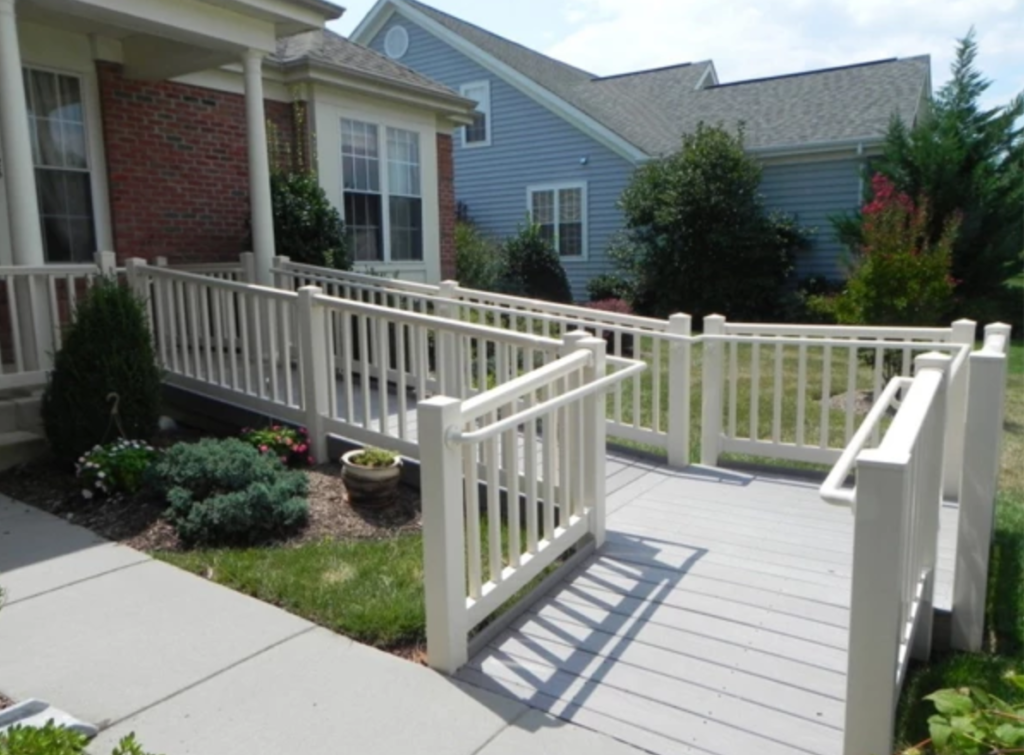Your home should be a place where your entire family feels safe and comfortable. If you have children or other family members with disabilities, shopping for a house that’s accessible and amenable to their needs is crucial. But even if you already own a home or rent, there are ways to make your home more inclusive for children with special abilities.
Here are some ideas to look for in a new home or to consider if you’re looking to renovate your existing property.
Upgrades that will make your home accessible for children with disabilities
1. Ramps over stairs
If you have a child who uses a wheelchair, walker, or needs other assistance walking, stairs can be a hazard. More accessible options like ramps can make it more straightforward to navigate the home, encouraging independence in your child.
Look for homes with front ramps, or consider adding one on the side of your porch. If stairs can’t be avoided entirely, look for a house that has living spaces for your child downstairs. If you can, opt for a one-story home.
Lastly, you could consider a stairlift for spaces where stairs are necessary to ensure your child learns how to expertly get from one level to another.
2. Open up your doorways
If your child has any special equipment that helps them live their best life, widening doorways and hallways could help them get around your home more easily. This allows extra space for walkers, wheelchairs, oxygen tanks and other necessary items.
Don’t overlook the front entrance, either! The ADA recommends ensuring doorways are at least 36 inches wide.
3. Safe bathroom spaces
Navigating the bathroom safely is a crucial aspect of any home with residents with disabilities. Adding safety features can help with tasks such as washing their hands, bathing or showering, and going to the bathroom independently.
You might also consider handrails to help your child easily walk across your bathroom, a seated area in the shower or tub, hand bars around the toilet, and foot pumps that control the bathroom sink.
4. Kitchen upgrades
Making sure your child can get around the kitchen, help themselves to snacks, and even clean up after themselves may be necessary as your child grows up. Some simple upgrades can make these tasks a little easier.
Consider lowering countertops and sinks, or installing a mechanism that makes it easy to lower and raise them when needed. You can also look for tables that can be easily adjusted to accommodate your child at mealtime, which also provides a good place to do their homework or help with meal preparations.
5. Install non-slip flooring
Lastly, double-check to confirm that the flooring option you choose is safe for your child. While tile and concrete may be easy to wheel across, they can be slippery and dangerous if your child falls. Laminate flooring, hardwood, vinyl, or low-pile carpet may be better choices.
Financing upgrades with children with special abilities
Whether you already own your home or are buying a new one, securing all of the upgrades your child needs will likely require renovating. If that’s the case, make sure you understand the different financing options available.
If your child is on disability and receives Medicaid, the government may assist with the cost of some of these upgrades. Be sure to look into federal, state, or local programs that may offer you financial relief to help benefit your child.
Additionally, many organizations and nonprofits offer grants for children with special needs that could make these costs more manageable. Good resources can be found via internet searches, as well as speaking with parents from your child’s school or their doctor.
If you don’t qualify for assistance, taking out a home equity loan or line of credit (HELOC) could help homeowners leverage the equity you’ve built up in your home. Home equity loans and HELOCs usually have lower interest rates than personal loans, which means you’ll spend less in interest when you pay the money back. Just be sure you can afford the monthly payments; home equity financing options put your home up as collateral. That means if you can’t repay the loan, you could lose your house.
How to make your home more accessible for people with disabilities


